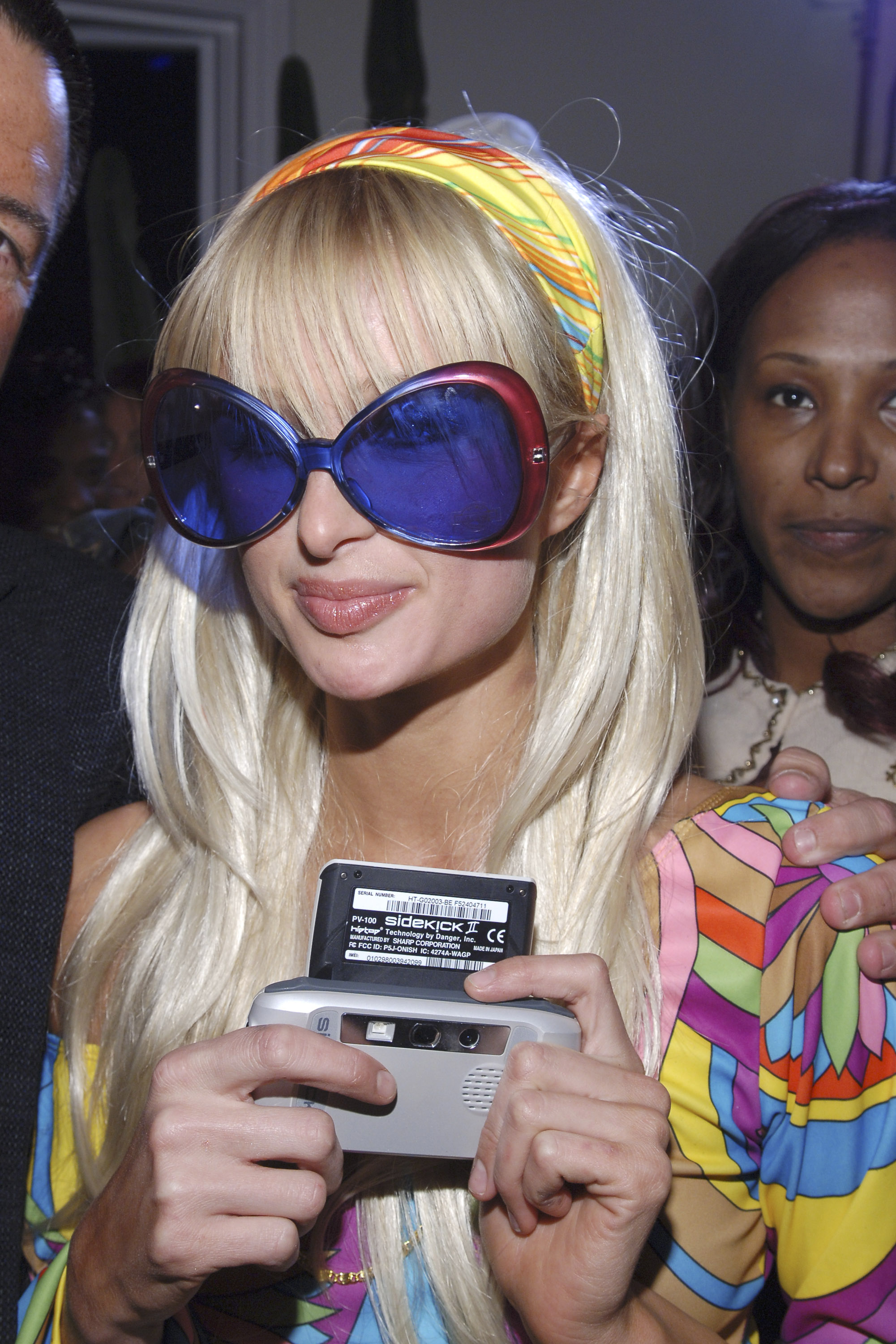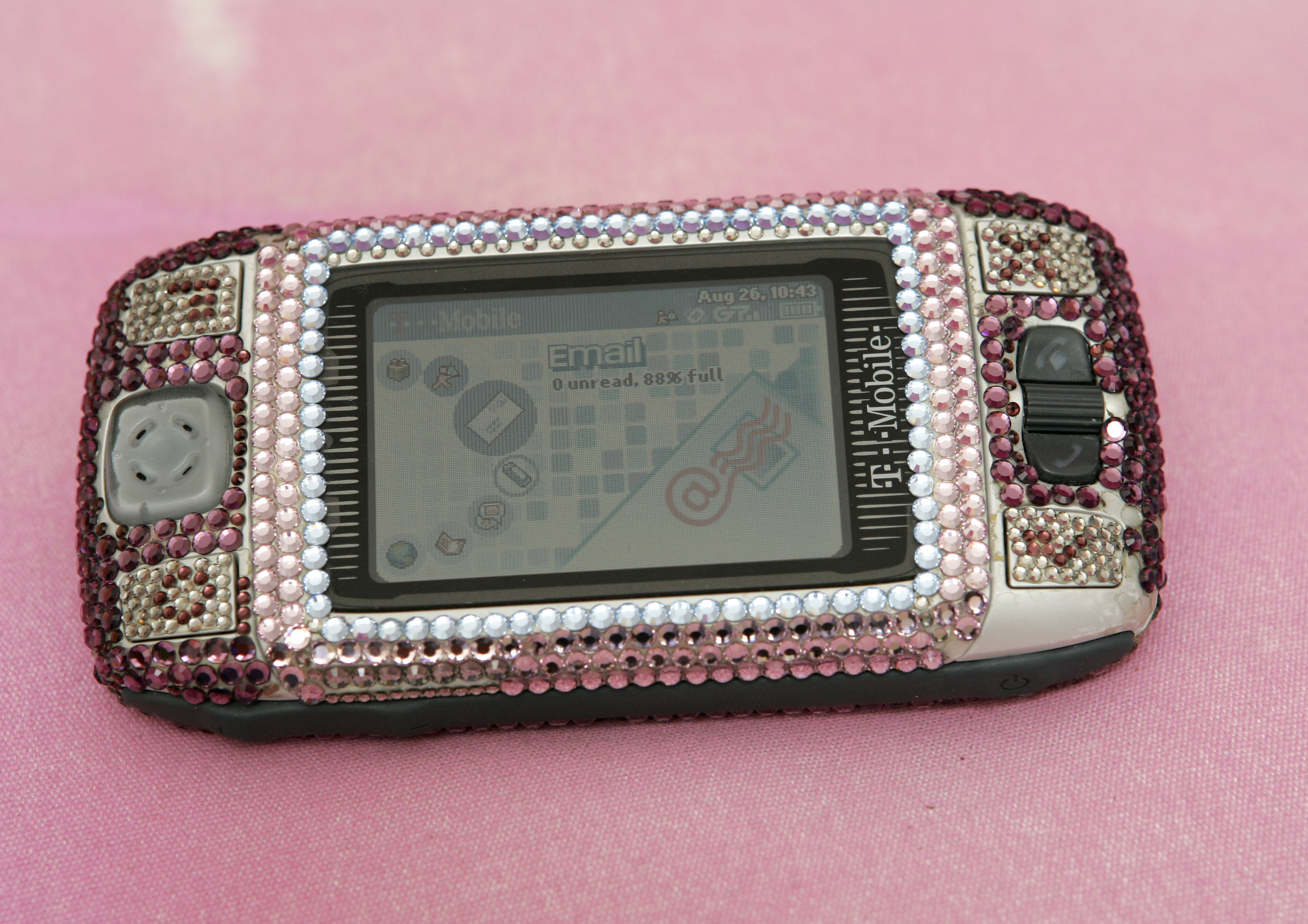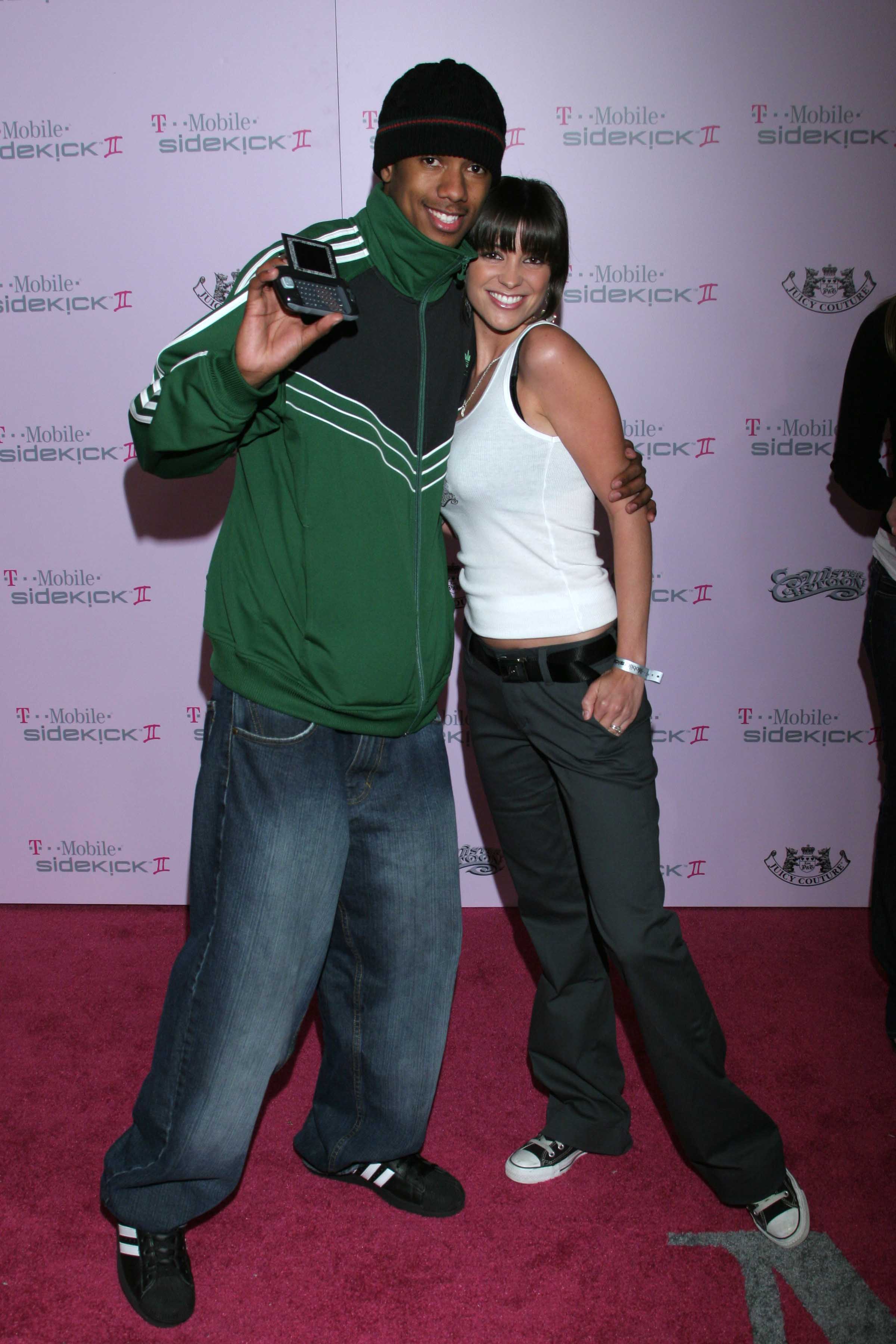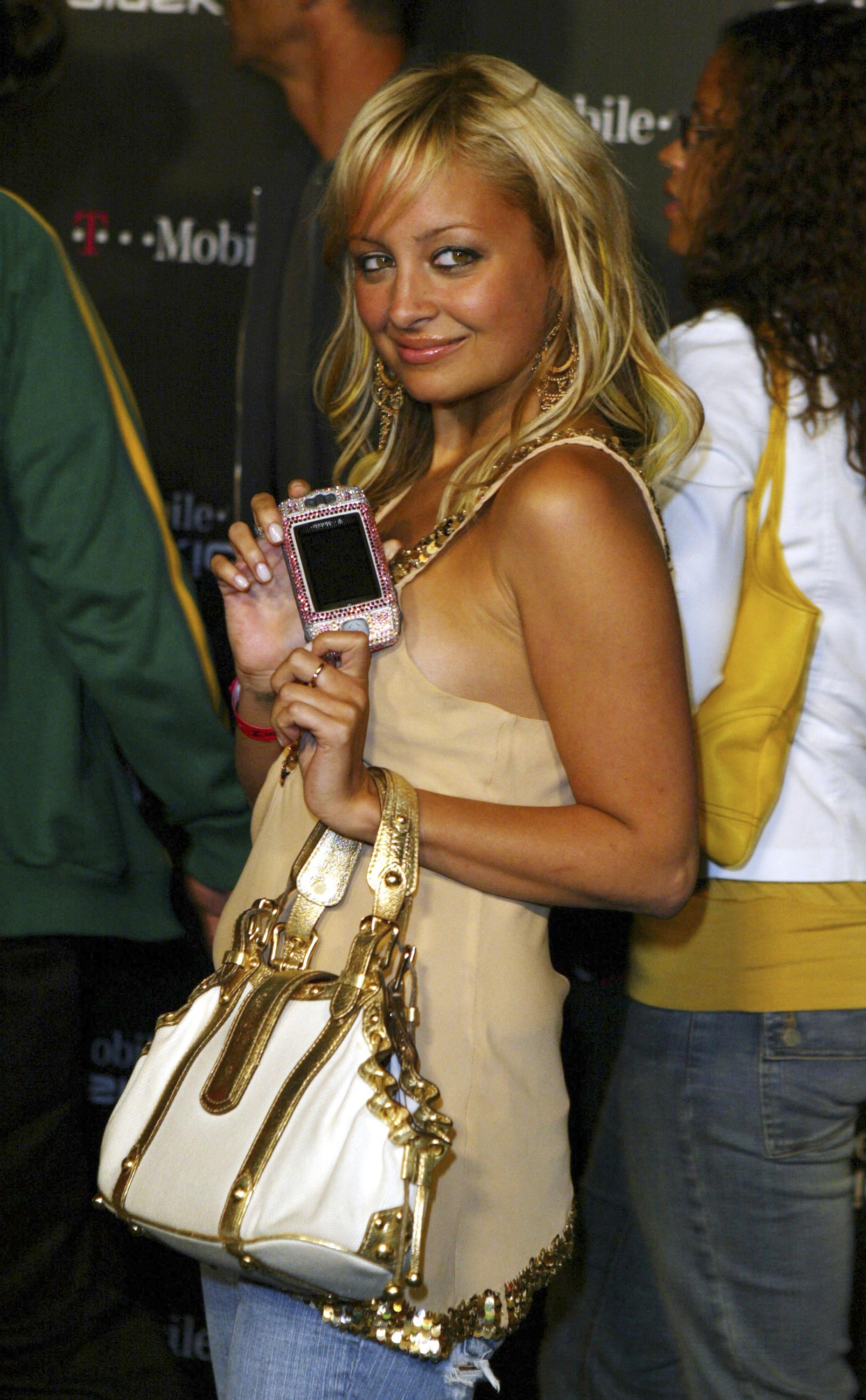The Sidekick Was Pop Culture's Most Stylish and Innovative Cellphone
There are few feelings like the anxiety of patting yourself down and not feeling your phone in that spot where it ought to be. I learned this the hard way in high school, in 2008, when my T-Mobile Sidekick suddenly went missing. For those of you not old enough to have had a Sidekick in its heyday, let's establish its allure: Sidekicks were the phone of the next generation, a phone that prioritized pleasure over business (unlike staid Palm Pilots and Blackberries) and appealed to Gen Xers and millennials who had grown up teetering between analog and digital worlds. The Sidekick's horizontal screen, which spun open like suicide doors, made flip phones seem old-fashioned. So, you'll understand why, when my Sidekick went missing, my boyfriend at the time blocked the door to my homeroom class in an attempt to find the thief. The phone never turned up, but once some students witnessed his rage, a few people chipped in to help me buy a brand new one.
 Photo: Noel Vasquez via Getty
Photo: Noel Vasquez via Getty  Photo: John Sciulli via Getty
Photo: John Sciulli via Getty The Sidekick was the it accessory of the early-aughts seen on socialites like Paris Hilton and Kim Kardashian, and it replaced rapper's affinities for the equally trendy two-way pagers. Once Sidekicks trickled down to the hallways of my high school in Jamaica, Queens, they were a status symbol (hence, robbing season)-even if you had no status at all. This era, which feels slightly prehistoric considering that phones no longer have keyboards, is the predecessor of the inescapable internet world we're living in today. For a bunch of kids who grew up with dial-up modems, T9 texting, and free minutes" after 9PM, Sidekicks were the first time many of us could be online and mobile. It was the first time that our online personas weren't tied to our desktops, and could be ignited with one (very cool) swivel of a screen.
It's not hyperbolic to compare the Sidekick to the iPhone. Sidekick's parent company, Danger Research Inc., was started in 2000 by three former Apple employees: Matt Hershenson, Joe Britt, and Andy Rubin. Eventually, the trio would bring in Apple co-founder Steve Wozniak. Nearly a decade before Apple premiered its inaugural iPhone, the creators of the Sidekick were leading the charge on what we now consider smartphones. Initially known as Hiptop, the Sidekick was conceived as a compact computer. People are used to surfing the Net with at least a 15-inch full-color monitor, animation, sound and killer apps like instant messaging and e-mail," Rubin said in a 2001 USA Today interview. We asked, Why can't people get that same experience in a handheld device?"
At a conference in 2001, Rubin shared how their cell phone built on previous tech innovations. Two-way pagers have made important contributions such as the thumb keyboard, but fall short on usability, attachments, graphics, sound, and style." No wonder Kelly Rowland's Nokia page to Nelly-written on a Microsoft Excel sheet-in the video for the 2002 song Dilemma" never reached him. Danger Inc. valued uninterrupted connectivity so much that it developed software for their phone to be able to back up the information stored on it. It was the only PDA phone that was constantly syncing to its SIM card, which meant your emails, text messages, and web browsers could be retrieved even if your phone was ruined. To test this theory out, the team dropped a bowling ball on their prototype and reused the SIM card with a brand new device. Good as new. What is now standard practice thanks to the cloud," was groundbreaking when Danger premiered it.
Over $11 million and many prototypes later, the Hiptop became the Sidekick, a phone equally as functional as it was stylish. Some people got them bedazzled, others secured limited editions: Athletes like Dwyane Wade and Tony Hawk had their own designs, and so did brands like Diane von Furstenburg, LRG, and Juicy Couture. Culture had come a long way from playing Snake on Nokias, and it seemed as if corporations were finally ready for youth culture to dictate how tech should operate.
 Photo: Rodrigo Varela via Getty
Photo: Rodrigo Varela via Getty  Photo: John Sciulli via Getty Images
Photo: John Sciulli via Getty Images Marketing for the Sidekick 2, two years later, only clarified the creators' target audience. In a T-Mobile ad, celebrities like Paris Hilton, Big Boi, and Snoop Dogg were just like us, Instant Messaging their peers asking each other mundane questions like how to pick ripe fruit or when to use fabric softener. In other words, the (now aptly named) Sidekick should be your trusty companion for all of life's answers. Texting was so simple that, eventually, it took precedence over phone calls. We even began to speak in shorthand abbreviations in person, and advertisers took notice.
By 2007, the Sidekick evolved with our needs: The Sidekick 3 sported a built-in mp3 player, and the LX model was its thinnest version yet, which was the first model to support video capabilities. But the problem with being the new shiny thing is that, eventually, shinier things come along. That year, Apple premiered the first iPhone which, like the Sidekick before it, built upon the technology of their competitors. Apple's state of the art touchscreens turned Sidekicks into the new flip phones. Danger's focus had been unlimited internet access, but unfortunately for them, there are few companies who can turn a phone into a personal computer better than a computer company. By the time Steve Jobs unveiled the iPhone, Apple had already sold 100 million iPods, and its success only made the desire for a phone as functional as an iPod more appealing. An iPod, a phone, and an internet communicator," Jobs said in his keynote speech at MacWorld in 2007. These are not three separate devices. This is one device and we are calling it iPhone."
Not only were Apple ambitions a threat, Sidekick began having problems with basic functionality. In 2005, Rubin left the group and co-founded Android with Google. That same year, hackers used Danger's cutting-edge software system against them. What was once a selling point was now used as a way to slut shame Hilton after her nude photos were leaked. In a 2005 Washington Post interview with the hackers, the group admitted to targeting Hilton after seeing her in a T-Mobile commercial. Typical wireless devices can only be hacked into by someone physically nearby, but a Sidekick's data storage can be accessed from anywhere in T-Mobile's service area by someone with control of the account," the Postsaid. That means the hackers were at that point able to download all of her stored video, text, and data files to their phone."
 Photo: Patrick McMullan via Getty
Photo: Patrick McMullan via Getty  Photo: Frazer Harrison via Getty
Photo: Frazer Harrison via Getty Over the years, the shortcomings of the phone's data storage continued to make its users more vulnerable. In 2009, a year after Microsoft bought Danger Inc. for $500 million, Microsoft experienced a week-long server outage, making any information stored on the server unavailable. The following year, T-Mobile stopped using Danger's servers altogether. Earlier versions of the phone were becoming obsolete. By 2011, most people expected that Sidekicks would move over to Android's operating system, by virtue of Rubin's contribution to the original, but that never happened and the phone was discontinued shortly after the release of the Sidekick 4G.
It's been over a decade since I traded in my Sidekick for an iPhone. Oddly enough, I've been loyal to T-Mobile for years, for no real reason other than the nostalgia of their once-beloved exclusive phone, once the arbiter of cool and, now, an ancient artifact.
Kristin Corry is a Senior Staff Writer for VICE.